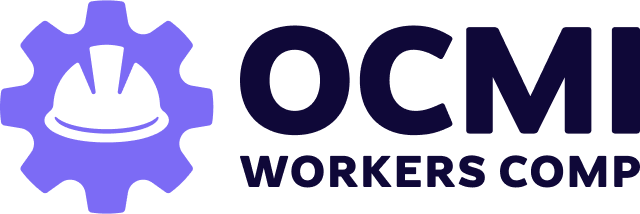From Minneapolis tech startups to Duluth construction firms, general liability insurance in Minnesota protects businesses from unexpected lawsuits and claims. It isn’t required by state law for every business—but in many industries, it’s mandatory for licensing, contracts, or just staying in business.
This guide explains who needs Minnesota general liability coverage, how policies work, what claims look like, cost factors, and what happens if you skip this critical protection.
Who Needs General Liability Insurance in Minnesota?
Minnesota does not require all businesses to carry general liability insurance. However, many industries must show proof of coverage to obtain or maintain licenses, leases, or contracts.
Industries and roles that commonly require GL insurance:
- Licensed Contractors: The Minnesota Department of Labor and Industry requires residential building contractors and remodelers to carry liability insurance with limits of $100,000 per occurrence, $300,000 aggregate, and $25,000 for property damage.
- Retailers and Hospitality Businesses: High customer traffic means higher risk of injuries—many landlords and vendors won’t do business without a Certificate of Insurance.
- Real Estate Managers: Often required to carry GL to cover third-party injuries at managed properties.
- Agriculture and Manufacturing: Although not always mandated, equipment hazards and product liability risks make coverage essential.
Even if you’re legally exempt, most clients, property managers, and event venues require GL before signing agreements. Without coverage, you may face delays, denied permits, or missed business opportunities.
What Minnesota General Liability Insurance Covers
A commercial general liability policy protects your business from third-party claims that can result in significant costs. Standard Minnesota GL policies include:
- Bodily Injury Coverage: Pays for medical expenses if a customer trips on your icy sidewalk in St. Paul.
- Property Damage Liability: Covers repairs if your crew accidentally breaks windows during a remodel in Bloomington.
- Personal and Advertising Injury: Covers libel, slander, or copyright claims related to business marketing or online posts.
- Medical Payments Coverage: Pays immediate medical bills for minor injuries—even without a lawsuit.
- Legal Defense and Court Costs: Covers attorney fees, settlement costs, and judgments related to covered incidents.
Some policies include or allow add-ons for specific industries—such as pollution liability for restoration contractors or products-completed operations coverage for manufacturers.
The Minnesota Department of Commerce regulates insurance carriers and ensures fair practices under Minnesota Statutes Chapter 60A.
Common Claims and Business Risks in Minnesota
Lawsuits vary by industry and region, but certain types of claims are widespread throughout the state. Common examples include:
- Slip-and-Fall Injuries: A customer falls on a wet floor in a Rochester restaurant
- Property Damage: A home repair contractor damages siding during a winter project in St. Cloud
- Advertising Injuries: A competing business accuses a Minneapolis marketing firm of trademark infringement
Most GL claims settle before trial, but when lawsuits do go to court, they can take significant time to resolve. Minnesota courts follow modified comparative negligence rules, so liability may be shared—but defense costs still add up.
Businesses often confuse general liability and workers’ comp. This guide on general liability vs. workers’ compensation explains the key differences and how both coverages work together to protect your company.
Cost Factors for General Liability Insurance in Minnesota
Pricing varies based on several key factors rather than fixed rates:
Industry Risk Level: Higher-risk trades like roofing, HVAC, and demolition typically pay more than lower-risk businesses, especially in urban areas or during winter-heavy months.
Business Size: Employee count and annual revenue significantly impact premiums, with larger businesses generally paying more due to increased exposure.
Geographic Location: Urban areas may have different rates than rural locations due to varying claim frequencies and legal environments.
Claims History: A clean record helps lower premiums, while past claims may increase costs.
Policy Structure: Coverage limits and deductibles affect pricing. Higher limits provide more protection but increase premiums.
Bundling Options: Combining GL with a Business Owners Policy (BOP) or workers’ compensation can provide cost savings.
Industry-Specific Endorsements: Additional coverages like cyber endorsements are becoming more common for small businesses to comply with Minnesota’s evolving privacy standards.
Claims Process and Compliance in Minnesota
If something goes wrong, you must notify your insurer promptly. Failure to report in a timely manner may lead to denied claims.
Here’s what to expect:
- Immediate Reporting: Most insurers require notice promptly after the incident occurs
- Document the Event: Take photos, gather witness statements, and file internal reports
- Work With Adjusters: Provide documentation and access to your property if requested
- Stay Compliant: Certificate of Insurance requirements continue to evolve, and many vendors now require digital certificates for faster verification
Consequences of lacking required coverage: There’s no state-imposed fine for lacking general liability insurance. But if your industry license or lease requires it, noncompliance can result in:
- Rejected building permits
- Suspended operations
- Breach of contract lawsuits
Most importantly: If you’re sued while uninsured, you’re personally liable—putting your business and personal assets at risk.
What Minnesota Business Owners Should Do Next
Without general liability insurance, a single lawsuit can derail your business. Don’t leave your finances exposed.
Take action now:
- Review your contracts and licensing agreements for coverage requirements
- Identify any lease or vendor agreements that require GL
- Consider bundling policies for potential cost savings and broader protection
- Stay current with changing insurance requirements and industry standards
Don’t wait for an incident to expose your coverage gap.
Call 855-718-7552 to speak with a licensed Minnesota insurance specialist.






